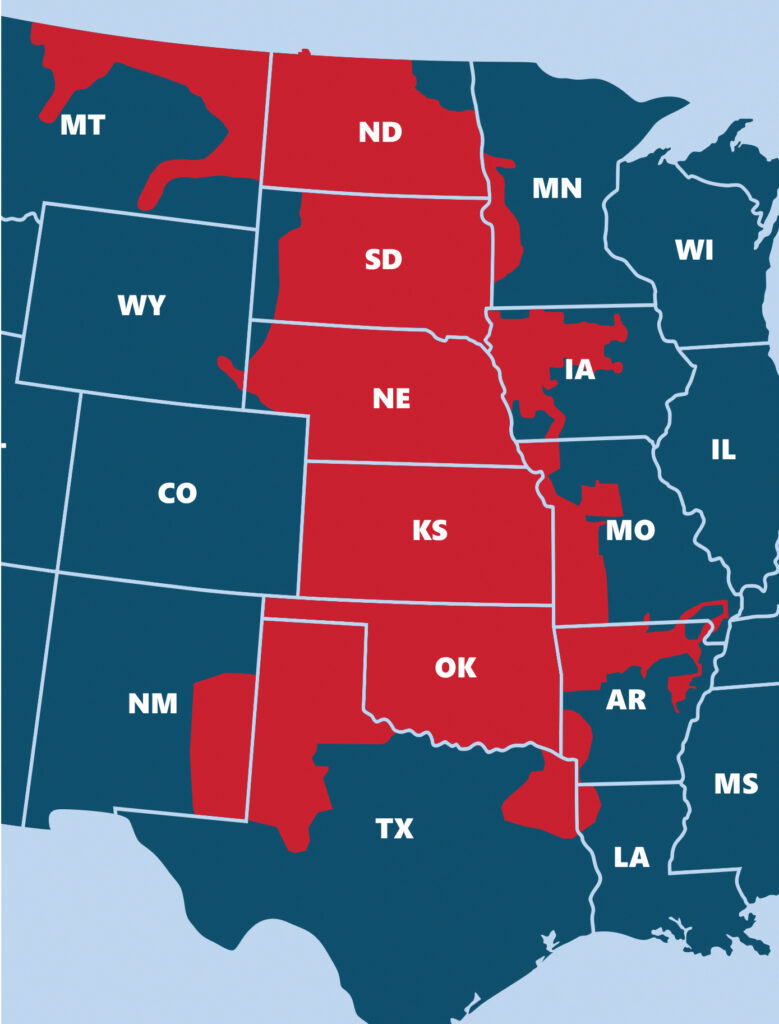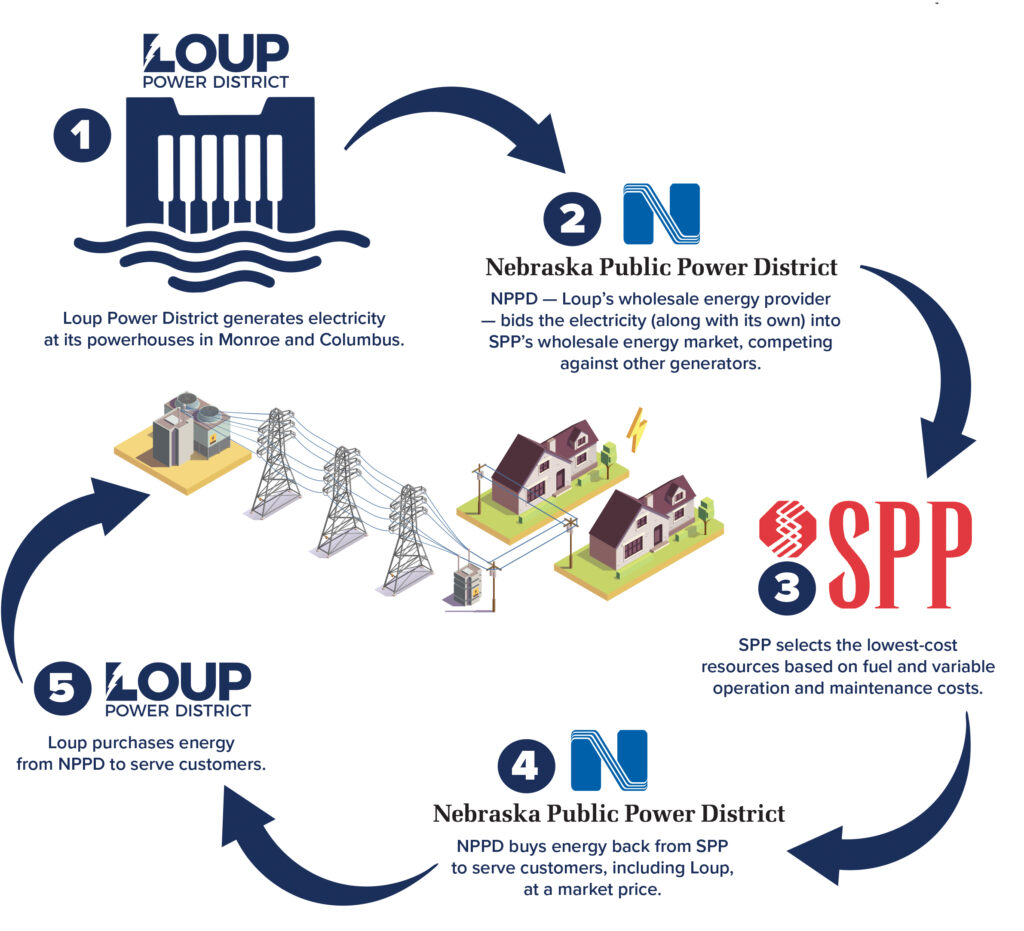Our lives depend on electricity, but most of us have no idea how many people, machines, and complex processes work together around the clock, every day of the year to ensure the reliable supply of cost-effective power.
The Southwest Power Pool (SPP) is a major player in this process. Even so, the organization remained largely unknown by the public until the February 2021 winter storm that impacted more than 170 million Americans.
SPP is a regional transmission organization (RTO) based in Little Rock, Ark. It manages the bulk electric grid, operates a wholesale electric market, and plans transmission on behalf of utilities and transmission companies.

552,885 square mile service territory
More than 18 million people
949 generating plants
5,180 substations
Like air-traffic controllers — who don’t own the planes they direct, the skies they monitor, or the airports that serve as travel hubs — SPP doesn’t own power plants or transmission lines, but instead directs the regional bulk power grid to ensure that electricity gets from where it’s made to where it’s needed.
Back in February 2021, historic cold temperatures caused massive consumption of heat and power, straining the electric grid. To preserve that grid and prevent catastrophic failures, SPP implemented rolling blackouts for the first time in its 80-year history.
Nebraska Public Power District is Loup’s wholesale power provider and has been a member of SPP since 2009. In turn, Loup is a member of SPP. While customers throughout the state and Midwest were frustrated by the blackouts, the event also highlighted the benefit of SPP membership.
SPP’s members all shared energy during the crisis, directing it to where it was needed the most. This helped minimize impacts to any one entity. Those short energy curtailments prevented the grid from cascading out of control like it did in Texas.
That state suffered a major power crisis when the winter storm hit. More than 4.5 million homes and businesses were without power — some for several days — because electric utilities in state failed to winterize power sources like wind turbines and natural gas infrastructure.
In addition, Texas’ power grid is not connected to national grids, so it was difficult to import excess energy from other states during the storm.
Nebraska would have potentially been in the same situation if it maintained its own power grid, for example. Although the state generates plenty of power, we rely on our neighbors for help when sustained weather events — extreme heat or cold — spike the amount of power we consume.
The arrangement also saves utilities —including NPPD and Loup — money at the end of the day. Overall, SPP’s services provided members $2.7 billion in net benefits in 2021 at a benefit-to-cost ratio of 18-to-1.
SPP is like AIR TRAFFIC CONTROL
| AIR TRAFFIC CONTROL | SOUTHWEST POWER POOL |
| Does not own airplanes, airlines or airports | Does not own utilities, power generators, or transmission lines |
| Does not own the sky it monitors | Does not own the land electricity flows across |
| Directs air routes to ensure airplanes and passengers are safely transported | Monitors and directs the regional bulk power grid to ensure electricity gets from wehre it’s made to where it’s needed |
So how do NPPD, SPP, and Loup work together?

DOWNLOAD the Generator Magazine featuring this story.

